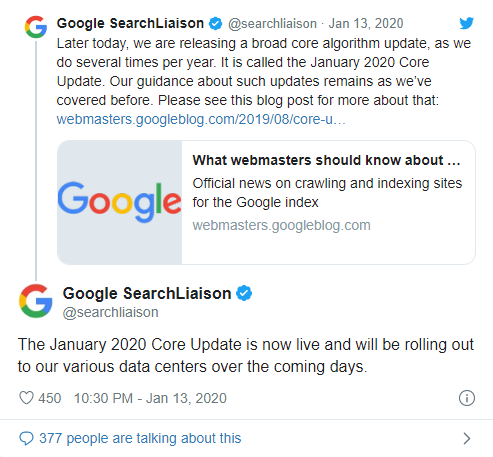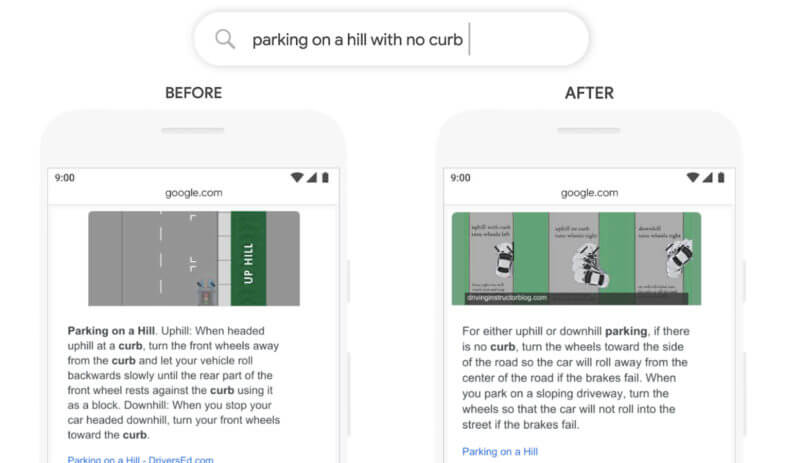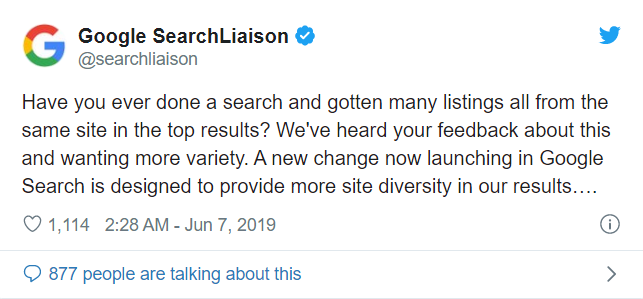Good SEO is necessary to rank a website, right? But what do you mean by Good SEO? As we know that numbers of sites of the same context do SEO but only a few of them rank on Google’s SERP. The reason behind the ranking of those few sites is that they must have followed the latest protocols of Google’s SEO. Yes, Google makes hundreds of changes every year in its search ranking algorithm and to get a desirable ranking of your sites in Google’s search results, you must be aware of Latest SEO Updates.

Whenever Google introduces a change to its ranking algorithm, it leads to panic in many website owners – especially those who don’t understand how the search engines function and what’s required to optimize the search engine. It must be noted that SEO is a dynamically changing sector, and you need to keep up-to-date with all the latest trends. The major algorithmic changes made by Google are listed below in reverse chronological order.
.jpg)
1. Broad Core Algorithm Update
Google rolled out the first Algorithm Update of 2020 – ‘Broad Core Algorithm Update’. It was announced through the official twitter account of the Google Search Liaison.

A broad core update is generally an upgrade to the overall Google algorithm used to better understand the search queries of users. Google doesn’t target sites of any particular niche or ranking signals, such as quality, in this form of update. With such updates, there’s nothing to do with these changes to boost your rating if it is lost as a result. All you can do is keep focusing on creating quality content, building backlinks, and sending social signals. That way, the algorithm is updated several times a year, but broad core updates are generally done to incorporate new features into the algorithm that affects how the sites are ranked.
2. BERT Update
BERT (Bidirectional Encoder Representations from Transformers) is Google’s neural network-based technique for natural language processing (NLP). As per Google, BERT is helpful to understand the nuances and context of words in searches and be able to better match those queries with more relevant results. Let us understand it with an example. The image provided below depicts a Google Query “parking on a hill with no curb“.

Now, as you can see in the first search, the word “curb” is more focused and the word “no” is quite ignored. But this is not so in the second search result.
3. Maverick Update
Maverick Update was named by Webmaster World’s Brett Tabke in response to significant changes in the search results and the traffic reported. Maverick is like the many smaller changes Google conducts on a routine basis each year, and it remains unclear whether it means those verticals or website elements will be considered more favorably by Google going forward. As similar to other smaller updates to the algorithm, this update doesn’t point to any changes in the overall search scenario. Impacting several industries and types of queries, it does not appear to point to a ranking shift that favors one type of brand or content over another. Google makes approximately 2-3 thousand changes to the algorithm every year. However, this change may have been a greater impact release than others.
4. Site Diversity Update
The motive of the Site Diversity Update is to limit the number of domains appearing with multiple URLs in the Search Engine Result Pages. It was launched to reduce the multiple site listings in the search results i.e. no more than 2 pages from the same website. It was pre-announced through the official twitter account of the Google Search Liaison.

5. Google Mobile Speed Update
Google rolled out the mobile page speed update by making page speed a ranking factor for the mobile search results. Google reported that this only impacts the slowest mobile sites. The functionality of this update can be understood as if you have a slower mobile site and you see less traffic from Google then the Google Search Console will show that your ranking is fluctuating due to your slow site speed on mobile. The page loading time matters a lot as Google’s stats show that if page load time increases from 1 to 10 seconds, the bouncing rate increases around 120% which majorly affects the ranking. Around, 52-54% of mobile users leave the page that takes loading time more than 3 sec and the average loading time for a site on a mobile device is 15 seconds.
Google only made a few updates to its algorithms in its early years. But, as of now, Google makes thousands of changes in its algorithm every year. However, most of these updates are so minute that they go entirely unnoticed. But, on the other hand, the search engine rolls out major algorithmic updates that remarkably impact the search engine result pages. So you need to be aware of all these updates (whether minor or major) to get better ranking in Search Engine Result Pages (SERPs).
Comments